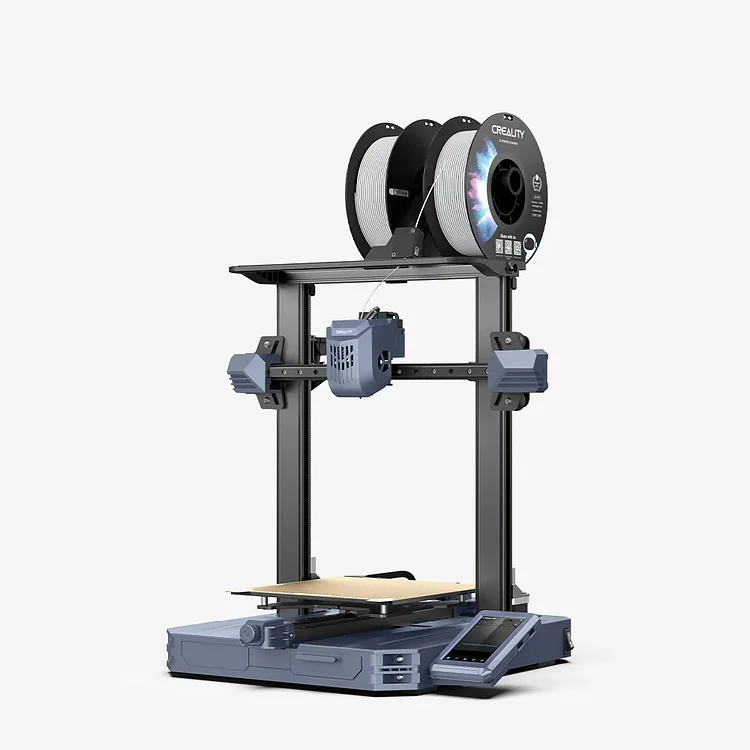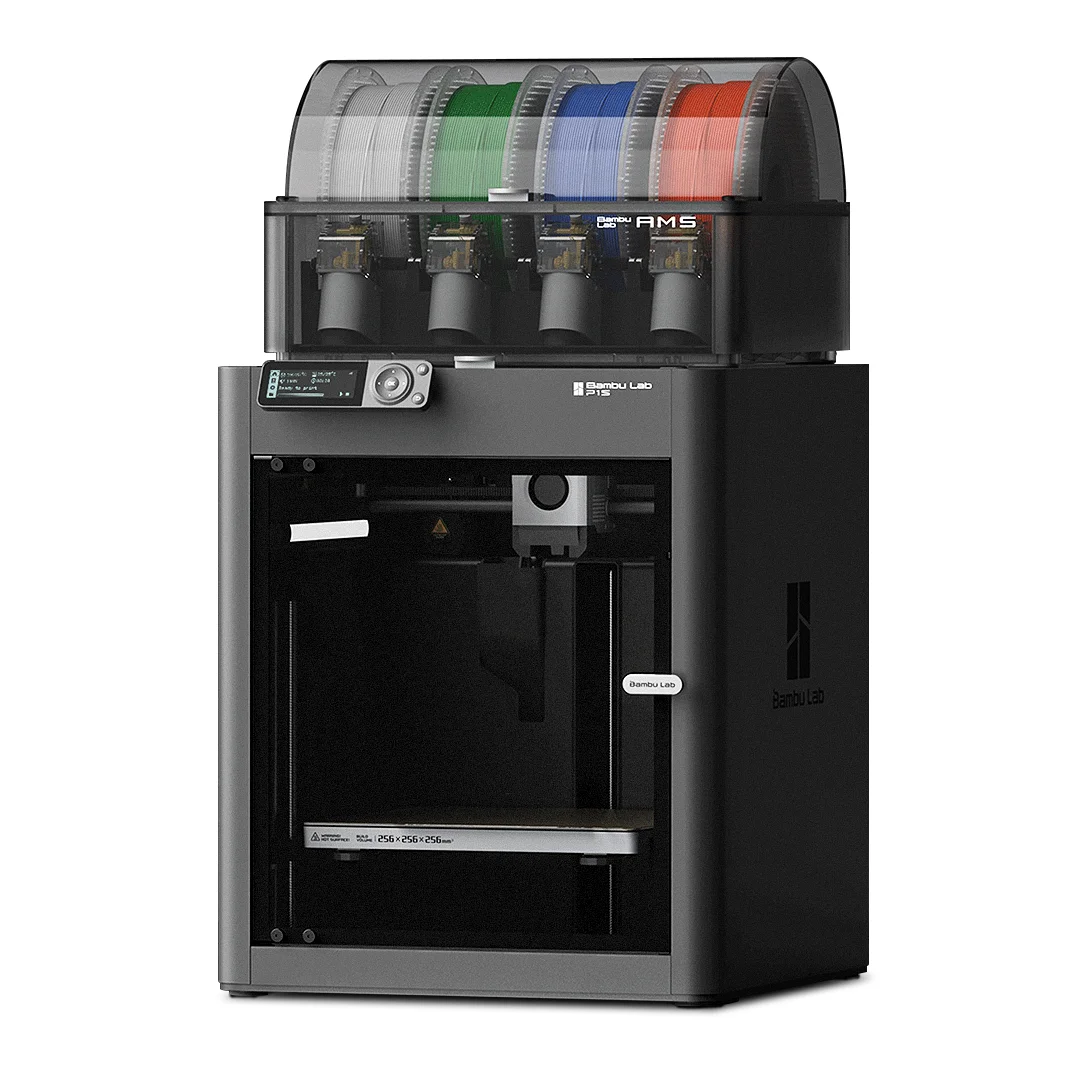Compare CR10 SE vs P1S
Comparison between the best 3D printers
Choose the best 3D printer at the best price. The cheapest 3D printers are here.
Buy a 3D printer here with 3D Fila.
 |
 |
|
| Model | CR10 SE |
P1S[BUY P1S] |
| Printing Material | Filament | Filament |
| Buy Filament for Creality CR10 SE | Buy Filament forBambu Lab P1S | |
| Estimated price | $386,00 | $949,00 |
| Manufacturer | Creality | Bambu Lab |
| Release Year | 2023 | 2023 |
| Print Volume [mm] | 220x220x265 | 256x256x256 |
| Printer Size [mm] | 490x470x625 | 389x389x458 |
| Weight [kg] | 6,9 | 12,95 |
| Power Loss Recovery | NO | YES |
| Enclosed printer | NO | YES |
| Bed Leveling | Automatic | |
| Filament End Sensor | NO | YES |
| Bed type | Heated | |
| Power supply system | Direct Drive | Direct Drive |
| Standard nozzle | 0,4 | 0,4 |
| Maximum Nozzle Temperature [°C] | 300 | 300 |
| Maximum Bed Temperature [°C] | 110 | 100 |
| Maximum printing speed [mm/s] | 600 | 500 |
| Filament holder | YES | YES |
| Camera for supervision | YES | YES |
| Recommended filaments | PLA, PETG, PET, TPU, PA Wood, ABS, ASA, PA, PLA-CF | PLA, PETG, TPU, PVA, PA, PA-CF, Nylon, PC |
| Recommended slicers | Creality Print, Cura, Simplify3D, PrusaSlicer, Orca Slice | Bambu Studio, Super Slicer, Cura, Prusa Slicer, Orca |
| Maximum Resolution [mm] | 0,1 | 0,1 |
| Processor | Quad ARM A7 1.2 GHz | |
| Display | Touchscreen 5'' | |
| Power Supply | 350 W | |
| Connectivity | USB, Wifi | Wifi, Bambu bus, Cartão SD |
| Operating systems | Windows, Linux, Macbook | Windows, Linux, Macbook |
| Date of registration in the system | 2024-07-02 | 2024-04-11 |
| Release date | 2023 | 2023 |
| Extra features | The Creality CR10 SE stands out for its printing speed of up to 600 mm/s, easy and intuitive assembly, direct extruder with double gears, hotend with hardened steel nozzle and ceramic heater, automatic leveling with CR-Touch and pressure sensor, and use of Creality OS firmware based on Klipper, with automatic input shaping calibration. It also includes Wi-Fi connectivity, a filament out-of-stock sensor and a robust structure with linear rails on the X and Y axes. | The Bambu Lab P1S stands out for its out-of-the-box practicality, eliminating the need for manual adjustments with automatic calibrations such as bed leveling and vibration compensation. It features multicolor printing capability through the AMS system, allowing up to 16 colors when connecting four AMS units. With an advanced control algorithm, the P1S offers fast printing speeds without sacrificing quality. Equipped with modern features such as filament end sensor, semi-automatic belt tension, direct extruder, welded frame and all-metal hotend, along with a fully enclosed chamber, the P1S promotes a superior printing experience, supporting a wide range of materials. |
| Support for multiple colors and materials (AMS and CFS) | NO | YES |
Notes * |
||
| Cost-benefit | 7 / 10 | 7 / 10 |
| Hardware | 2.1 / 10 | 5.6 / 10 |
| Tela | . | . |
| Print volume | 3 / 10 | 4 / 10 |
| Performance | 5 / 10 | 4 / 10 |
| [BUY P1S] |
Conclusion |
| In comparing the Creality CR10 SE and the Bambu Lab P1S 3D printers, several key factors highlight their respective strengths and positions within the market. The **Creality CR10 SE** offers an impressive balance of features and cost-effectiveness. Its competitive price, decent print volume, and high maximum printing speed make it an appealing choice for hobbyists and those new to 3D printing. It provides essential features such as automatic bed leveling, a heated bed, and a solid construction, making it user-friendly and suitable for a variety of materials like PLA, PETG, and several others. However, it lacks some advanced features, such as power loss recovery and enclosed printing, which may limit its usability in certain environments or for specific materials. On the other hand, the **Bambu Lab P1S** positions itself as a more advanced option, featuring additional conveniences such as automatic calibration, a filament end sensor, and an enclosed chamber for improved printing quality and material versatility. While it comes at a higher price point, it compensates with features geared toward more serious users or those looking to produce high-quality multi-material prints. The P1S’s capability for multi-color printing, combined with its robust construction, positions it as a suitable choice for professional or semi-professional applications. In conclusion, the choice between the Creality CR10 SE and the Bambu Lab P1S ultimately depends on the user's specific needs and budget. If cost-efficiency, ease of use, and speed are primary concerns, the CR10 SE presents an excellent option. Alternatively, for users seeking advanced features, greater material compatibility, and an overall premium experience, the Bambu Lab P1S is undoubtedly worth the investment. |

